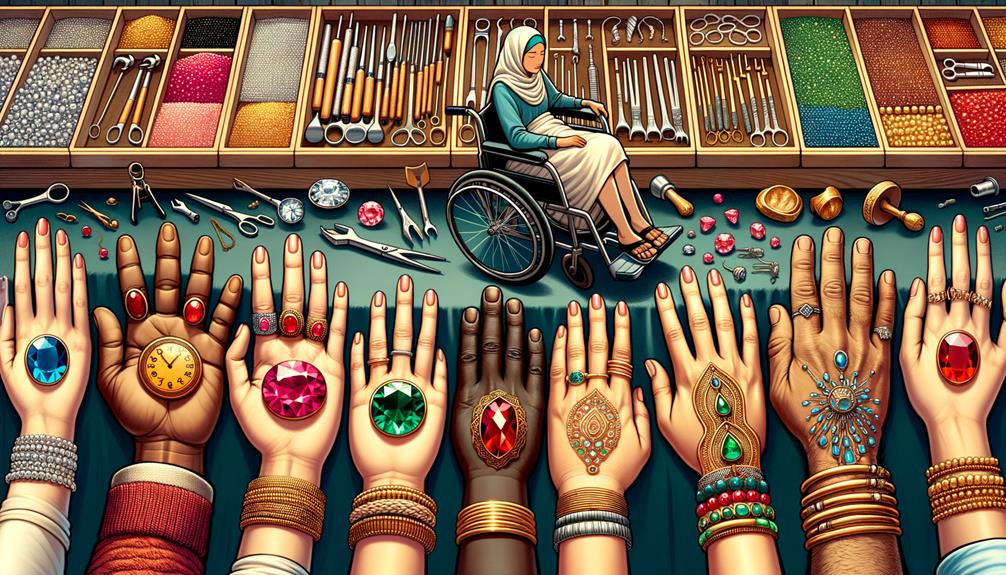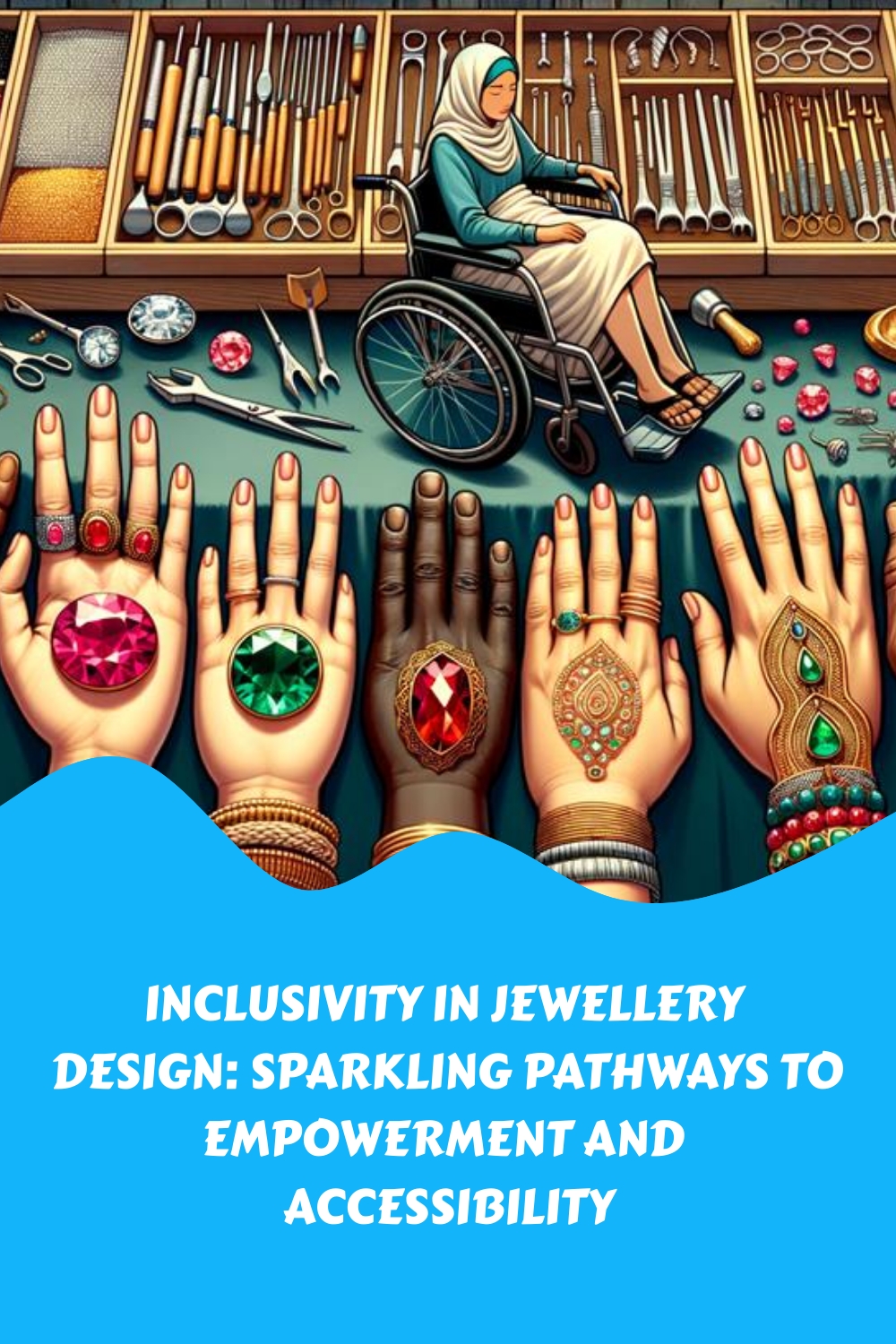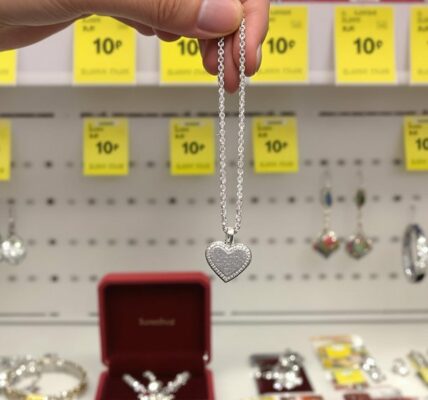Inclusivity in Jewellery Design: Sparkling Pathways to Empowerment and Accessibility
In an era of rapidly evolving consumer expectations, the emphasis on inclusivity in jewellery design to foster adaptability and accessibility is paramount. This critical approach not only aligns with ethical business practices but also broadens the market by addressing the varied needs of the community, especially those with disabilities.
Exploring the myriad of strategies—from innovative design adaptations that enhance inclusivity in jewellery design to the incorporation of cutting-edge technology—highlights the potential for transformative changes in the customer experience within the jewellery sector.
This raises a crucial question: How can jewellers effectively implement these inclusive practices through inclusivity in jewellery design, and what might be the broader implications for the industry?
Article Contents
- 1 Key Takeaways About Inclusivity in Jewellery Design
- 2 Embracing Inclusivity in Jewellery Design
- 3 Understanding Disability Needs
- 4 Technological Innovations
- 5 Jewellery Industry Collaboration Stories
- 6 Navigating Future Challenges
- 7 Frequently Asked Questions
- 7.1 How Can Jewelers Effectively Communicate With Customers Who Have Speech Impairments to Ensure Their Needs Are Met?
- 7.2 What Are Some Unique Challenges Faced by Customers With Intellectual Disabilities When Shopping for Jewellery, and How Can Jewelers Address These Concerns?
- 7.3 Are There Specific Types of Jewellery That Are More Accessible or Easier to Use for Individuals With Fine Motor Skill Challenges, and Can Jewellers Custom-Design Such Pieces Upon Request?
- 7.4 How Can Jewellers Create a Sensory-Friendly Shopping Environment for Customers With Autism or Sensory Processing Disorders?
- 7.5 What Measures Can Jewelers Take to Ensure Their Online Platforms Are Fully Accessible to Customers With Various Disabilities, Including Those Who Use Screen Readers or Require Alternative Text Descriptions?
- 8 Our Final Thoughts About Inclusivity in Jewellery Design
Key Takeaways About Inclusivity in Jewellery Design
- Incorporate universal design and technological innovations for jewellery that enhance accessibility and user safety.
- Embrace diversity by designing jewellery that caters to individuals with disabilities and different cultural preferences.
- Foster a welcoming shopping experience through accessible environments, diverse representation, and personalized online options.
- Engage with the community through collaborations and events that amplify inclusivity and support marginalized groups.
- In this context, jewellery design is not just about the products we design and sell but the environment in which they are sold
Embracing Inclusivity in Jewellery Design
In the realm of jewellery design, embracing inclusivity means crafting pieces that not only cater to aesthetic preferences but also address practical needs, thereby broadening accessibility and celebrating the diversity of all wearers. Universal design principles and customization options play pivotal roles in this approach, allowing designers to create comfortable and functional jewellery for a wider audience. This focus on adaptability and creativity ensures that individuals can express their personal style and feel empowered by their choices.
By prioritizing comfort through the use of sensory-friendly materials, designers can accommodate wearers with diverse needs, including those with sensory sensitivities. The introduction of adaptive closures and modular designs further challenges traditional norms, making jewellery not only more accessible but also a form of personal empowerment. These innovations reflect a deep understanding of the importance of diversity in design, moving beyond mere aesthetics to celebrate individuality and inclusion.
Through such efforts, jewellers demonstrate a commitment to innovation and inclusivity. By considering the unique needs and preferences of all individuals, designers are able to craft pieces that resonate on a personal level, fostering a sense of empowerment and belonging among wearers. This approach enriches the jewellery industry and serves as a testament to the transformative power of embracing diversity and creativity. Moreover, the allure of designer jewelry lies not only in its aesthetic appeal, but also in its ability to connect with people from diverse backgrounds. By embracing innovation and inclusivity, jewellers create pieces that transcend cultural and societal boundaries, offering a sense of connection and belonging to all who wear them. This commitment to diversity and creativity enhances the appeal and impact of designer jewelry, making it a truly transformative and empowering form of self-expression.
Understanding Disability Needs
Recognizing the diverse needs of individuals with disabilities is fundamental for jewellers aiming to provide an inclusive and accessible shopping experience. With approximately 1 in 4 adults in the U.S. having a disability, understanding and accommodating these needs is not just compassionate but also a strategic business practice. The ways in which disabilities manifest—ranging from mobility, cognitive, sensory, auditory, and visual impairments—demand a thoughtful and multifaceted approach to customer service and store design.
To enhance the shopping experience for individuals with disabilities, jewellers should consider the following:
- Communication strategies: Implementing clear, patient communication practices and offering various methods (e.g., written, verbal, and sign language) can significantly improve customer interactions for those with hearing or cognitive disabilities.
- Assistive technologies: While not delving into specific technological innovations, leveraging existing technologies within the store to aid those with visual and auditory impairments can make a substantial difference.
- Accessible displays and environments: Ensuring that the store layout is navigable for individuals with mobility issues and that products are within reach and can be interacted with tactilely when necessary.
Furthermore, regular staff training on disability awareness and adopting inclusive design practices can foster a welcoming atmosphere, ensuring all customers feel valued and supported.
Technological Innovations
Building on the foundation of understanding and accommodating the diverse needs of individuals with disabilities, integrating technological innovations into jewellery design emerges as a critical strategy for enhancing accessibility and safety. This approach not only aligns with the ethos of inclusivity but also leverages the potential of wearable solutions and assistive technology to bridge gaps in accessibility.
The design integration of smart accessories into everyday jewellery transforms them from mere adornments to invaluable tools catering to the specific needs of users with disabilities.
Incorporating accessibility features into jewellery, such as emergency assistance connectivity found in smart bracelets, exemplifies how technology can offer peace of mind and independence to individuals who might otherwise feel vulnerable. These innovations signify a shift towards a more empathetic and practical application of jewelry, turning them into smart accessories that prioritize user safety and comfort.
Jewellery Industry Collaboration Stories
Through collaborative efforts, the jewellery industry has begun to forge powerful partnerships with individuals with disabilities, creating a narrative of empowerment and inclusivity through innovative design. These collaborations are more than just business ventures; they are a testament to the power of personal connections and the impact they can have on both design inspiration and social impact. By integrating the experiences and stories of those with disabilities into the heart of their creative processes, jewellers are not only enhancing their collections but are also championing a cause that resonates deeply within communities.
Key aspects of these collaboration stories include:
- Empowering Narratives: Individuals with disabilities share their stories, offering a rich tapestry of experiences that serve as a foundation for unique jewellery pieces that embody strength, resilience, and beauty.
- Artistic Expression: These partnerships provide a platform for artistic expression, where design inspiration is drawn from the lived experiences of people with disabilities, leading to innovative and meaningful jewellery designs.
- Social Impact: Collaborations between jewelers and advocacy groups amplify the message of inclusivity, creating a ripple effect that encourages the industry at large to adopt more inclusive practices.
Through these efforts, the jewellery industry sets a precedent for how businesses can contribute to a more inclusive society, highlighting the importance of personal connections and the transformative power of artistic expression.
As the jewellery industry continues to evolve, embracing inclusivity and adaptability serves as a cornerstone for overcoming future challenges and meeting the diverse needs of all customers. To navigate the shifting landscape, jewellers must prioritize customer engagement, ensuring that every interaction is meaningful and reflects a commitment to accessibility and diversity. This involves understanding and actively responding to market trends with design flexibility that accommodates a wide range of preferences and needs.
Incorporating customization options becomes not just a value-added service but a necessity, allowing consumers to feel truly represented in the pieces they choose to wear. This approach fosters a deeper connection with the clientele while encouraging consumer feedback, which is invaluable for continuous improvement and innovation. By closely monitoring these insights, jewellers can adapt their offerings in real-time, ensuring they stay ahead of the curve.
Moreover, using adaptive features and innovative technologies in jewellery design can significantly enhance the customer experience, making the industry more accessible to individuals with disabilities. This shift towards a more inclusive and accommodating approach will address current challenges and set a new standard for the future, where jewellery is not just an adornment but a symbol of empowerment and inclusivity.
Frequently Asked Questions
How Can Jewelers Effectively Communicate With Customers Who Have Speech Impairments to Ensure Their Needs Are Met?
To effectively communicate with customers who have speech impairments, jewellers should consider sign language training for staff, the use of writing boards, and visual aids. These tools, along with gesture communication, can significantly improve service quality.
Additionally, integrating technology, such as speech-to-text apps, enhances understanding and interaction. By adopting these methods, jewellers exhibit a profound commitment to inclusivity, ensuring that every customer’s needs are attentively met and fostering an atmosphere of respect and accessibility.
What Are Some Unique Challenges Faced by Customers With Intellectual Disabilities When Shopping for Jewellery, and How Can Jewelers Address These Concerns?
Customers with intellectual disabilities may encounter barriers to understanding complex pricing structures or navigating the sensory-rich environment of a jewellery store. Addressing these challenges, jewellers can implement visual aids for clearer communication, offer custom sizing to accommodate diverse needs, and conduct empathy training for staff.
Instituting quiet hours reduces sensory overload, while flexible payment options ensure accessibility. These measures enhance the shopping experience and demonstrate a commitment to inclusivity and customer care.
Are There Specific Types of Jewellery That Are More Accessible or Easier to Use for Individuals With Fine Motor Skill Challenges, and Can Jewellers Custom-Design Such Pieces Upon Request?
Jewellery pieces featuring magnetic clasps, adjustable designs, texture variety, engraving options, and voice-activated technology are notably more accessible for individuals with fine motor skill challenges. These innovations allow users to enjoy adornment without the frustration of traditional fastenings.
Customizable upon request, such pieces meet functional needs and reflect personal style. Jewellers, by offering these options, showcase their commitment to accessibility, underscoring an analytical and experienced approach to inclusivity in design.
How Can Jewellers Create a Sensory-Friendly Shopping Environment for Customers With Autism or Sensory Processing Disorders?
Jewellers can create a sensory-friendly shopping environment by implementing quiet hours, providing sensory maps, and incorporating tactile experiences and visual aids. Establishing calming zones within the store can also offer a respite for customers with autism or sensory processing disorders.
These initiatives demonstrate a thoughtful and analytical approach to inclusivity, ensuring that all customers receive a comfortable and accessible shopping experience, thereby reflecting a commitment to serving and valuing every individual’s needs.
What Measures Can Jewelers Take to Ensure Their Online Platforms Are Fully Accessible to Customers With Various Disabilities, Including Those Who Use Screen Readers or Require Alternative Text Descriptions?
To ensure online platforms are fully accessible, jewellers should incorporate high colour contrasts for better visibility. They should enable voice navigation for users who rely on screen readers and ensure mobile optimization for ease of access on various devices.
Including captioned videos enhances the experience for hearing-impaired customers. Conducting user testing with individuals with diverse disabilities is crucial for identifying and addressing potential accessibility barriers. This demonstrates a commitment to serving all customers equitably.
Our Final Thoughts About Inclusivity in Jewellery Design
In conclusion, the imperative for jewellers to adopt practices that prioritize adaptability, inclusivity, and accessibility is underscored by the evolving consumer landscape and ethical considerations.
By integrating thoughtful design, acknowledging diverse needs, leveraging technological advancements, and fostering industry collaborations, jewellers can significantly enhance the retail experience for individuals with disabilities.
Such measures will bolster customer satisfaction and affirm the industry’s commitment to social responsibility, paving the way for a more inclusive future within the luxury sector.






